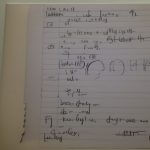How to Make Studying Fun: 9 Tips

1. Bring in Music.
Music can certainly get your brain waves going, especially if it is something that complements the studying process. Be careful when utilizing this, however, because there are certain types of music that are actually counterproductive when it comes to creating a good study environment. For example, most music accompanied by lyrics will distract you from what you’re doing, even if you’re so familiar with the song that you know the words by heart. Instead of the song receding into the background, your brain will share space between what you are studying and what you are listening to, and that is not a good combination in this case.
2. Incentivize results.
Maybe we should have put this one at the end, because that’s when you will actually realize it, but I’m not so sure. There’s a lot to be said for setting up your incentives for studying ahead of time, so that you will have something to look forward to while laboring through unit after unit. If you, for instance, give yourself permission to buy a song on iTunes or a book from Barnes & Noble after your study time is over, you should know that before you ever begin.
3. Get tactile with your learning materials.
With so much moved to electronics and the cloud, it can be refreshing to break out flash cards or note cards and use those for help in retaining information. Being able to move these tactile objects around, slipping and sliding them from the front of the deck to the back, keeps your hands busy and your mind focused.
4. Make it visual.
If you really want to know how to make studying fun, consider bringing in your own visual creations as a source of learning. For example — and this is an example we will carry over to the next tip as well — why study the order of planets from a book, when you can take that knowledge and create your very own drawing or painting that is filled with intricate details regarding what you are supposed to know about each of the planets? This is but a small example. There are other ways that you can incorporate visuals into the study time as long as your mind is open to it.
5. Use mnemonics.
The use of mnemonics has long been popular among students, who are trying to retain a lot of information coming at them with a furious pace. The best way for me to describe to you what mnemonics are is to carry over the example from No. 4 — the planets. Instead of trying to remember each of the different names, you can make a sentence using words that each start with the first letter of the planet in the correct order they are in. “My Very Eager Mother Just Served Us Noodles,” becomes “Mercury, Venus, Earth, Mars, Jupiter, Saturn, Uranus, and Neptune.” Before Pluto was decommissioned as a planet, you could have used, “My Very Earthly Mother Just Served Us Nine Pies.” The brain has lots of these cool tricks to help you remember cool information if you start trying to find means of simplification.
6. Go supplies shopping.
Believe it or not, it can be refreshing to go school supplies shopping, and it can actually rejuvenate your studies. And why shouldn’t it? You get to pick the style of notebook, the backpack, the folders, the paper type, and the writing utensils. These will all be extensions of who you are for the full school term, so make sure that you get something that sends a satisfactory message about yourself, or just something you enjoy using.
7. Vary your study locations.
Don’t let studying bog you down with boring things like the same old location. If you feel a place has gotten too stale for your brain to function properly, switch coffee shops or positions in the library. Maybe stay in your room one night or go over to a friend’s house, provided that friend can be trusted not to distract you.
8. Keep study time to short, manageable chunks.
We’ve said it in an earlier post this week, but it bears repeating. Use the Pomodoro Technique of 25 minutes focused study time, five minutes break, 25 minutes studies, 10 minutes break, 25 minutes study, five minutes break, alternating for the remainder of your overall study session. This allows you to enjoy intense focus when you need your brain the most and then rejuvenate with breaks that aren’t too long, but long enough.
9. Bring in a friend (or group of friends).
As with music, be careful whom you bring in to your study group because you don’t want someone there who is going to get in the way by not holding up their end of the process. There’s a time for being around people you like the most and a time for being around people who bring the best out of you. For study purposes, you want the latter and not the former.
In Summary
As you get ready for a new school year, it’s only natural that you will have a lot of nerves and apprehension. It’s okay. Allow yourself to feel that way from time to time. But look for ways that you can make the study process easier, and before you know it, you won’t be dreading it at all. And that’s how to make studying fun!
[Image via Livestrong]








